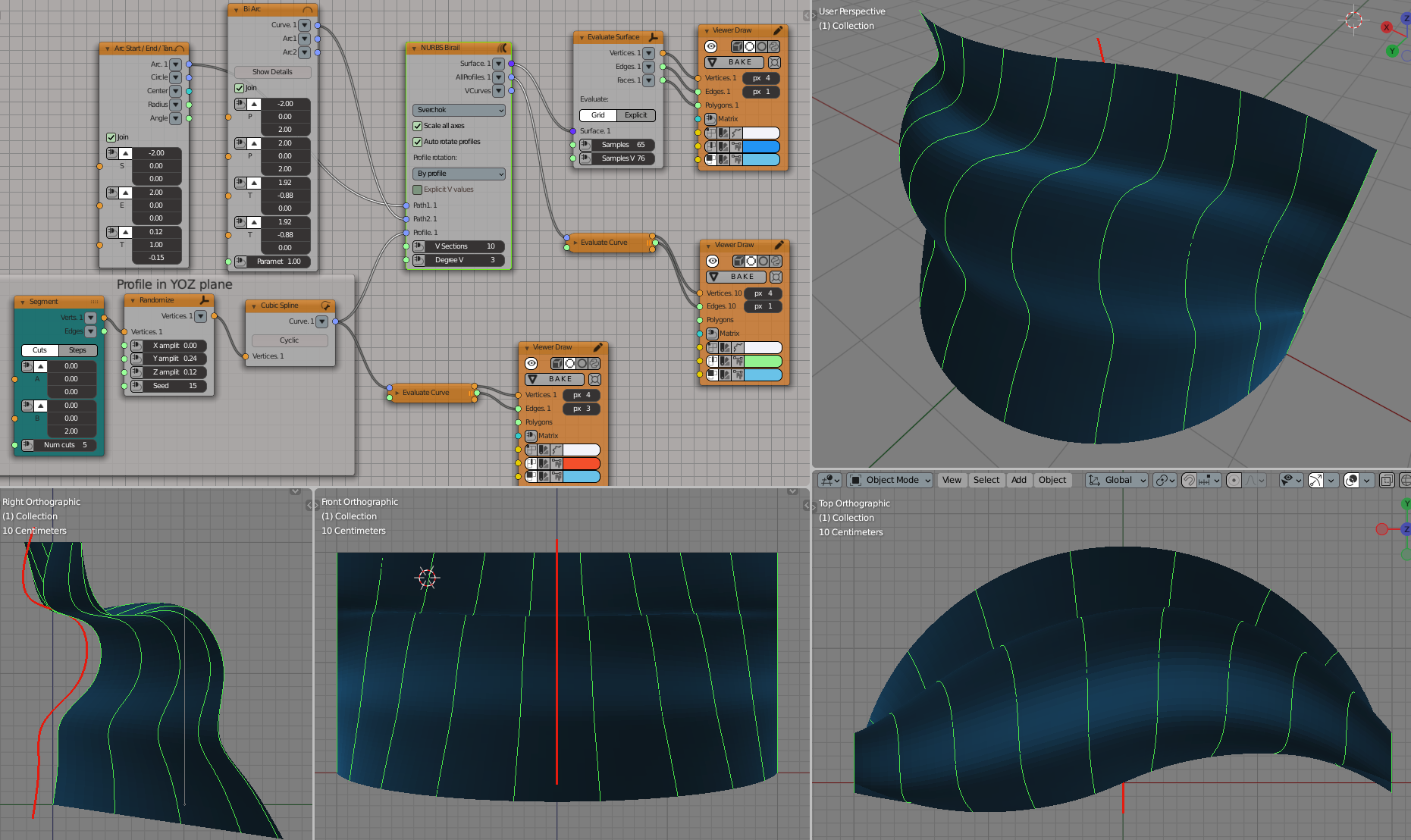NURBS Birail#
Dependencies#
This node can optionally use Geomdl library; it can also optionally use FreeCAD libraries.
Functionality#
This node generates a NURBS Surface object by sweeping one NURBS curve (called “profile”) along two other NURBS curves (called paths or rails), so that the starting point of the profile goes along the first path, and the ending point of the profile goes along the second path.
Several profile curves can be also used; in this case the resulting surface will be interpolated between them. If several profile curves are used, the user can provide specific values of path’s curve T parameter, at which profile curves must be placed; otherwise, the node will place them automatically evenly along T parameter of the path curve.
By default it is supposed that initially the provided profile curve(s) lie in XOY plane. However, there is an option to instruct the node to try to figure out correct rotation of profile curve(s). Note that this option may result in precision loss in some cases. Or, in other cases, it can guess desired profile rotation incorrectly. In such cases, you will have to place your profile curves in XOY plane and disable “Auto rotate” flag.
The node works by placing several copies of profile curve along the path curves, and then lofting (skinning) between them. If several profile curves are used, then the node interpolates between them and places these interpolated curves along the path curve.
This node can be compared with “NURBS Sweep” node. That node uses only one path curve.
At the moment, this node can effectively work with the following types of curves:
NURBS curves
Bezier curves
Cubic splines
Polylines
Circular arcs
Line segments
Some nodes, that output complex curves composed from simple curves (for example, “Rounded rectangle”), have NURBS output parameter; when it is checked, such nodes output NURBS curves, so “NURBS Birail” can work with them.
Inputs#
This node has the following inputs:
Path1. The first path curve, along which profile curves must be swept. This input is mandatory.
Path2. The second path curve, along which profile curves must be swept. This input is mandatory.
Profile. Profile curve or curves. The node can work with one profile curve per path curve, or list of profile curves per path curve. This input is mandatory.
VSections. Number of copies of profile curve (or interpolated curves, if several profile curves are used) the node will generate for lofting. This will be equal to number of control points of the resulting surface along it’s V direction. Bigger values usually correspond to better precision of sweeping procedure; but too high numbers can cause weird results or be too slow. The default value is 10.
V1, V2. Values of V parameter (i.e. path curve’s T parameter), at which profile curves must be placed for lofting. This input is available and mandatory if Explicit V Values parameter is checked. The node expects number of values in this input equal to number of profile curves. The values fed in V1 and V2 must be in an ascending order, e.g. (0.0, 0.333, 0.667, 1.0). For one profile curve, these inputs have no meaning. V1 input is for the first path, and V2 input is for the second path.
DegreeV. Degree of NURBS curves used to interpolate in V direction. As most of Sverchok numeric inputs, this input can process data with nesting level up to 2 (list of lists of numbers). Degree of 1 will make a “linear loft”, i.e. a surface composed from several ruled surfaces; higher degrees will create more smooth surfaces. The default value is 3.
Parameters#
This node has the following parameters:
Implementation. This defines the implementation of NURBS mathematics to be used. The available options are:
Geomdl. Use Geomdl library. This option is available only when Geomdl package is installed.
Sverchok. Use built-in Sverchok implementation.
FreCAD. Use FreeCAD libraries. This option is available only when FreeCAD libraries are installed.
In general, built-in implementation should be faster; but Geomdl implementation is better tested. The default option is Geomdl, when it is available; otherwise, built-in implementation is used.
Scale all axes. If not checked, profile curves will be scaled along one axis only, in order to fill the space between two paths. If checked, profile curves will be scaled along all axes uniformly. Checked by default.
Auto rotate profiles. If not checked, the node will assume that all profile curves lie in the XOY plane. If checked, the node will work with arbitrarily rotated profile curves. Enabled option requires more computations, and so, may make the node slower and less precise. Unchecked by default.
Profile Rotation. This defines how profile curves will be placed along the path curves. The available options are:
Path Normal Average. The node will try to place profile curves so that they will lie in normal planes of both path curves. Since normal planes of two path curves can differ, the node will calculate average normal plane.
Path 1 Normal. The node will place profile curves so that they lie in normal plane of the first path curve.
Path 2 Normal. The node will place profile curves so that they lie in normal plane of the second path curve.
By profile. The node will try to place profile curves so that they be parallel to initial location of the path curve. This is not always possible, but the node will try to keep it as parallel as possible.
The default option is Path Normal Average.
Explicit V Values. If checked, then the user has the ability to provide values of path curves parameter values, at which the provided path curves must be placed; otherwise, the node will calculate these parameters automatically (evenly). This parameter has no meaning if there is only one profile curve.
U Knots. This parameter is available in the N panel only. This defines how the node will modify input curves in order to make them use exactly the same knot vectors. Available options are:
Unify. Additional knots will be inserted for each curve in places where other curves have knots.
Average. Calculate knot vector by averaging knot vectors of the input curves. This can work only when input curves have the same number of control points.
Unify option often generates a lot of additional control points for the resulting surface; it is more universal, and more precise in many cases. Average mode does not create additional control points, and so it works faster, and any following nodes working with the generated surface will work faster; but Average mode is less universal, and in many cases it gives less precise interpolations. The default value is Unify.
Metric. This parameter is available in the N panel only. Distance type used for interpolation along V direction. The available values are:
Manhattan
Euclidean
Points (just number of points from the beginning)
Chebyshev
Centripetal (square root of Euclidean distance).
The default option is Euclidean.
Outputs#
This node has the following outputs:
Surface. The generated NURBS surface.
AllProfiles. Curves that were actually used to construct the surface. These are the curves provided in the Profile input, placed at their places along path curve and interpolated (if several profiles were used).
VCurves. Curves along V direction of the surface, which were used to calculate surface’s control points during skinning process.
Examples of usage#
1:
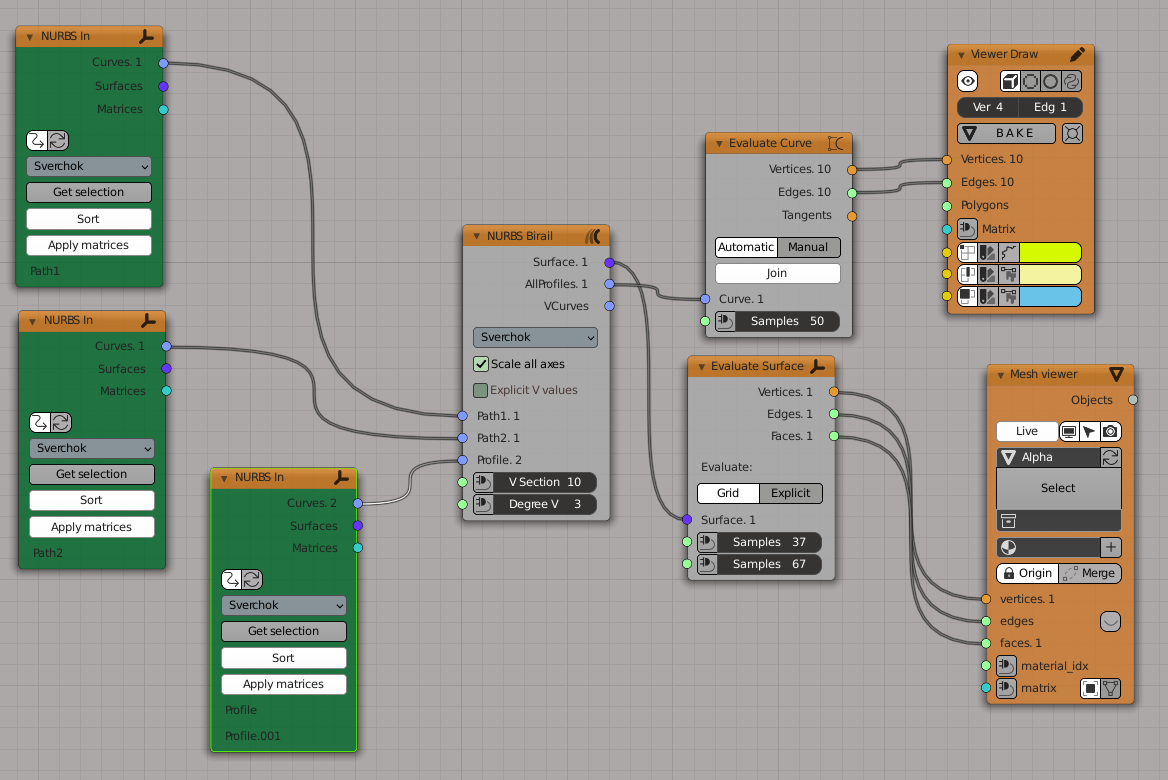
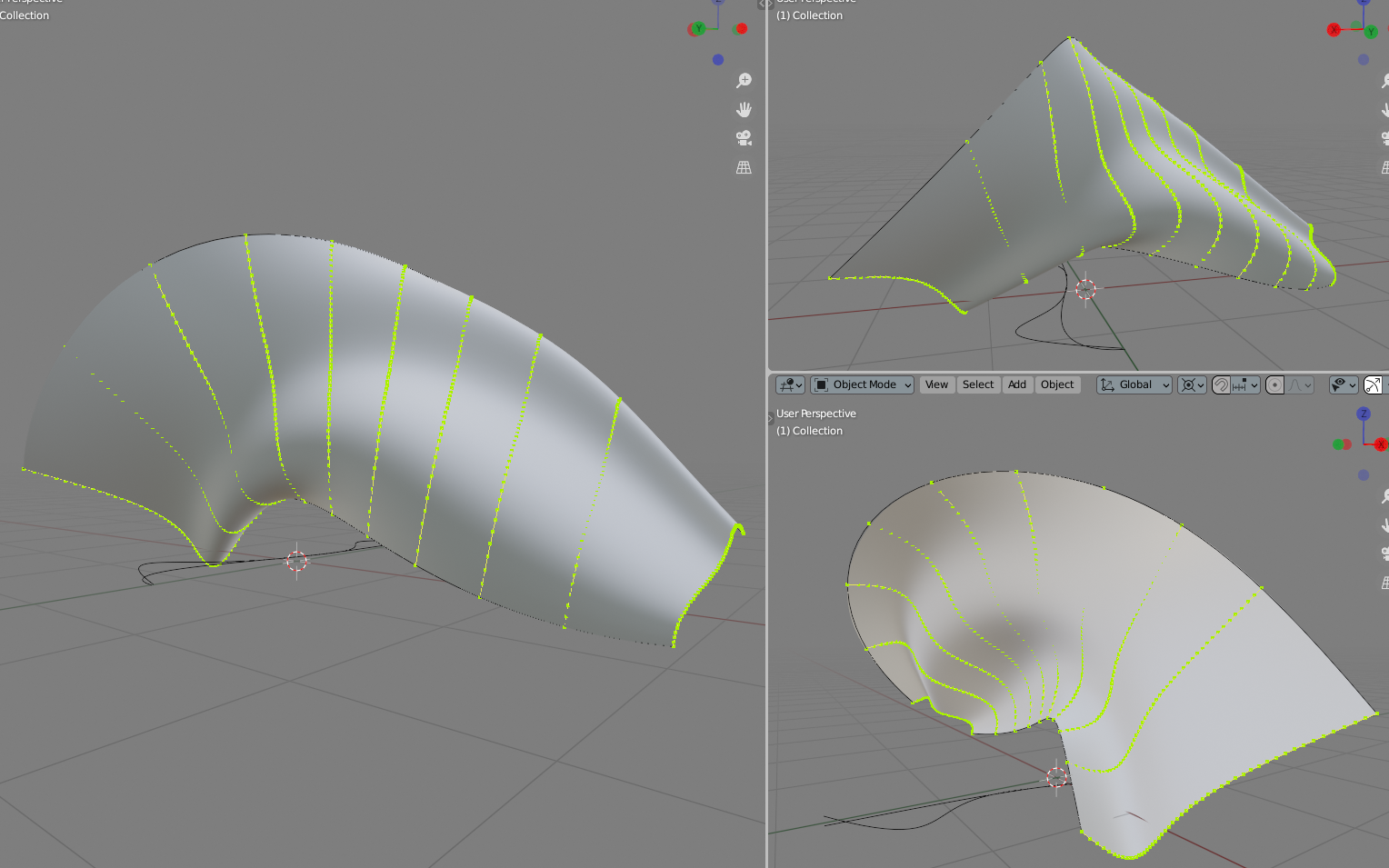
2:
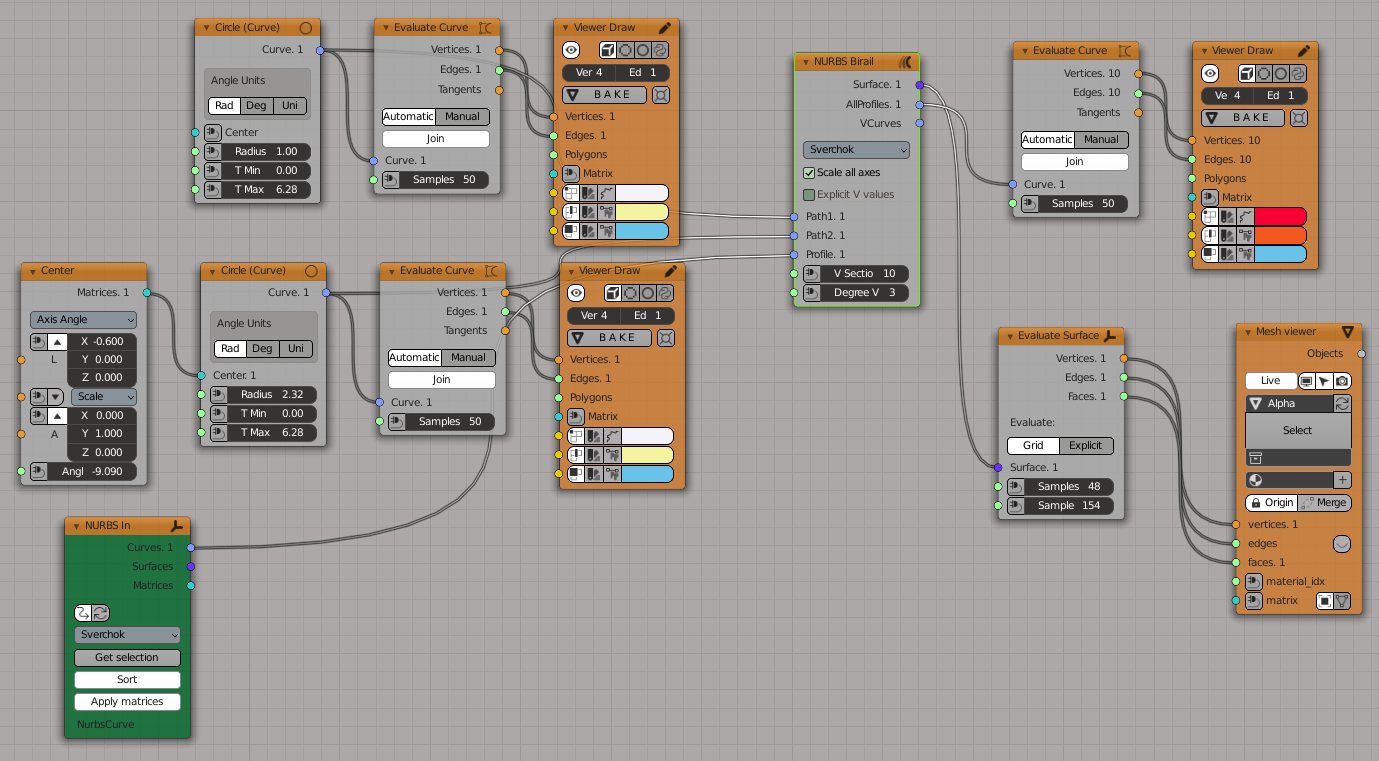
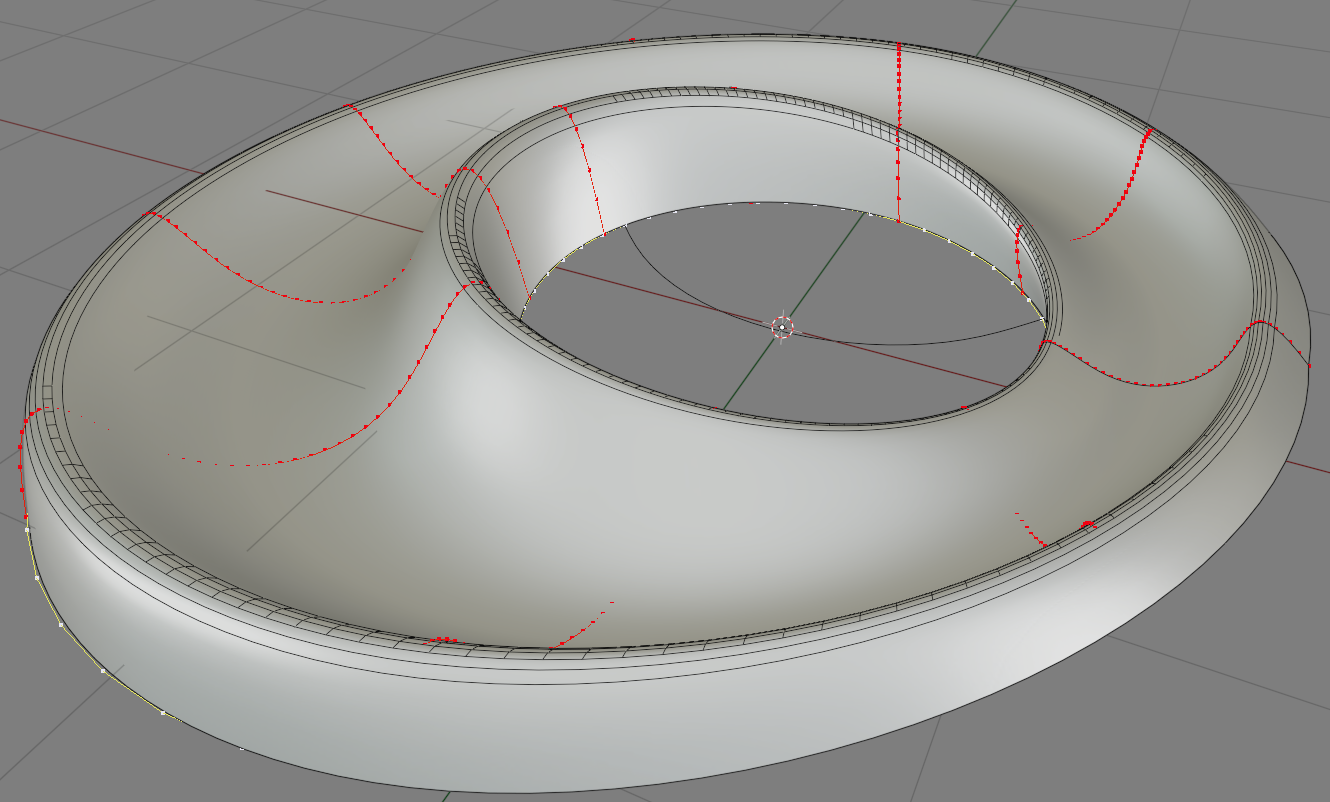
Create a circular arc (path 1) and S-shaped curve (path 2); use random profile curve in YOZ plane. Profile rotation = Path Normal Average (default one):
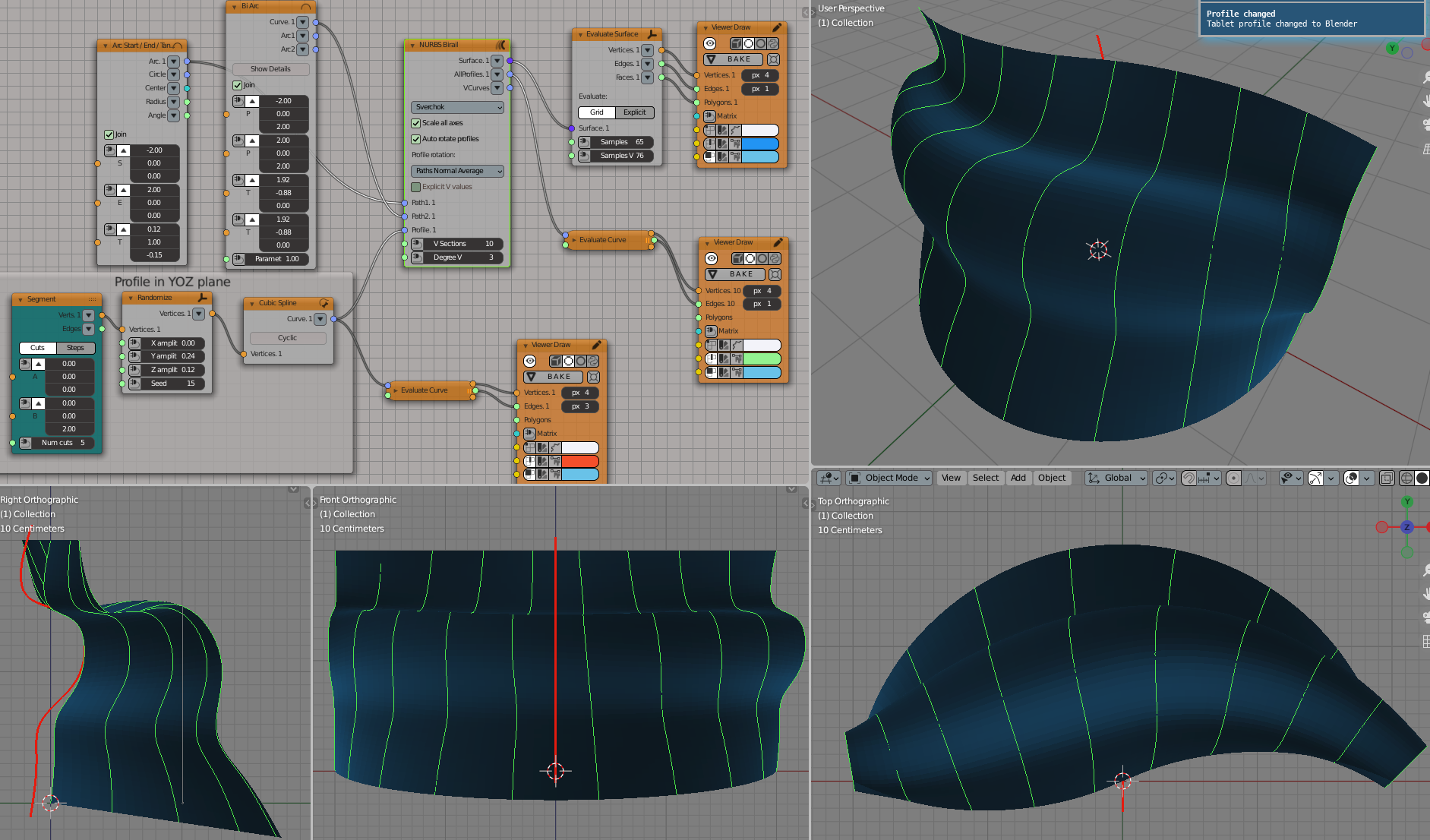
Same with Profile rotation = Path 1 Normal (i.e. profiles are perpendicular to the lower curve, circular arc):
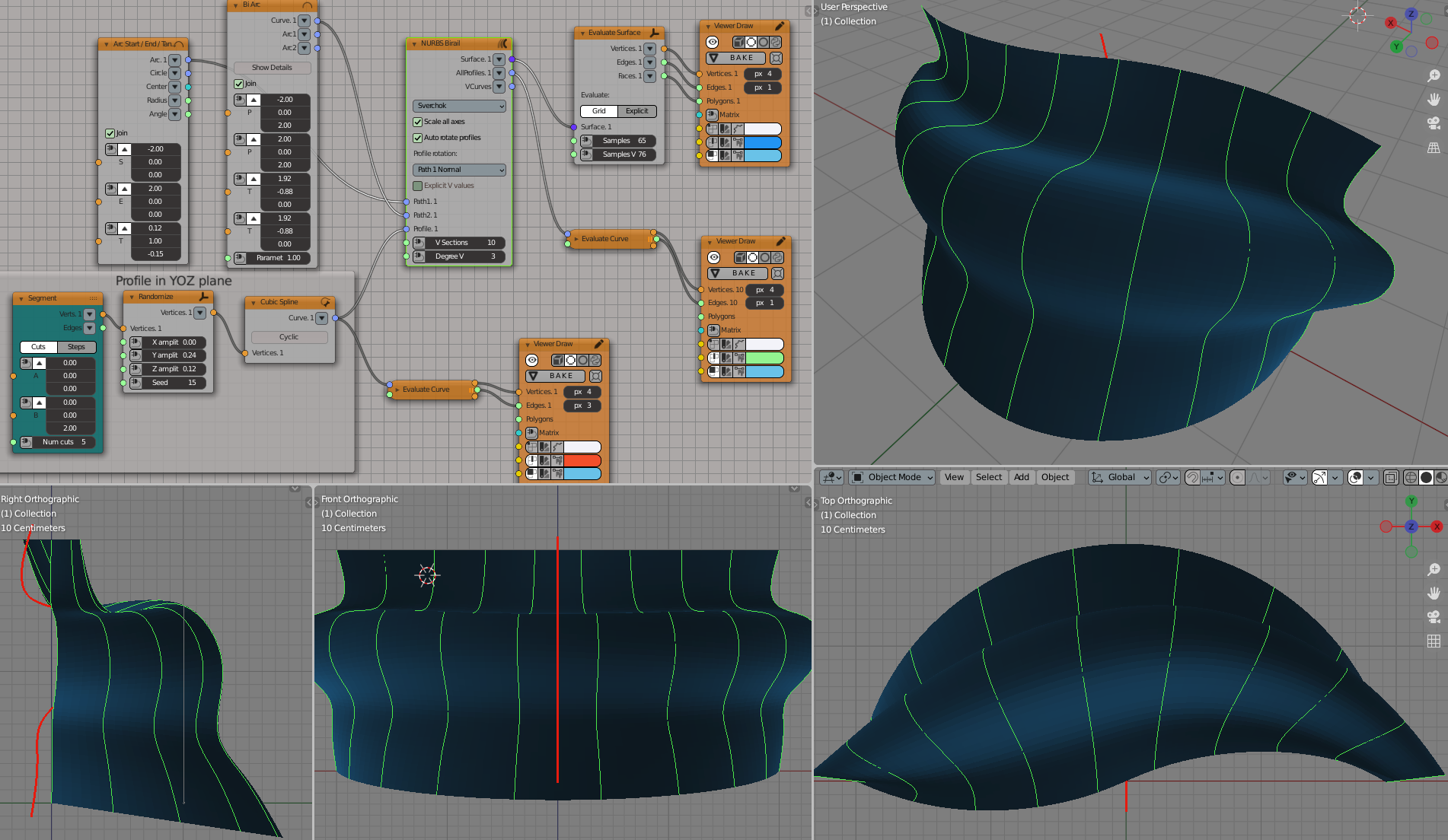
Same with Profile rotation = Path 2 Normal (i.e. profiles are perpendicular to the upper, S-shaped curve):
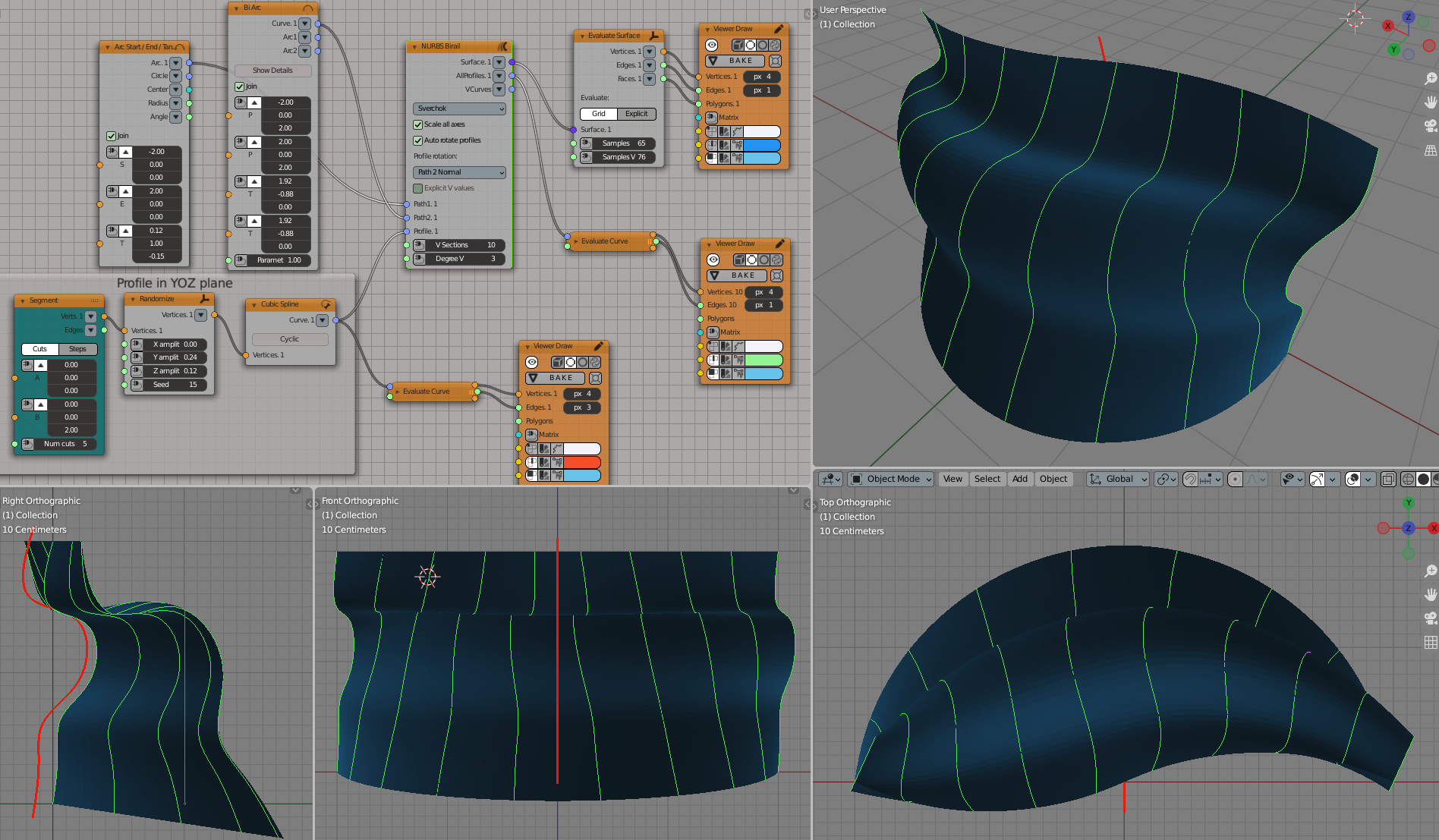
Same with Profile rotation = By profile, i.e. try to keep profile curves parallel to the original profile:
